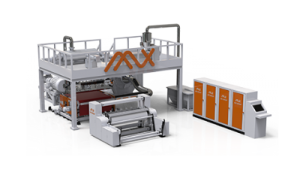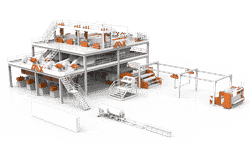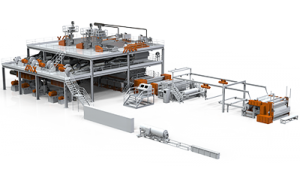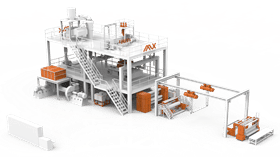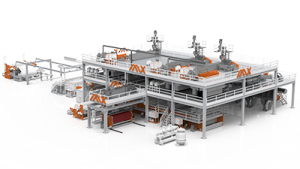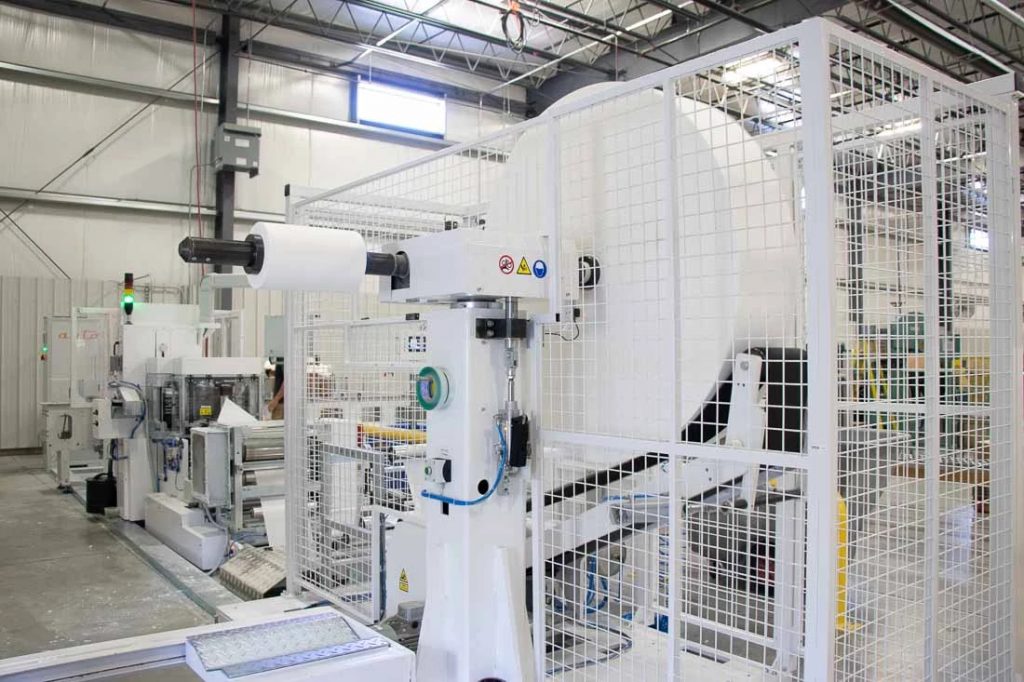
Each link in the production process of meltblown nonwoven will determine the quality of the final product. If we want to improve the quality of all aspects of the product, we need to continuously adjust the steps of the production process. The following are the six production process adjustment methods of the meltblown non-woven fabric machine.
Improve product strength
(1)Increase the hot airflow (the fiber is thin, there are many entangled nodes, the fiber is uniformly stressed, and the strength increases, but it will decrease after increasing to a certain extent).
(2)Increase the temperature of the hot air (same as above).
(3)Appropriately increase the weight of the product (within the scope of internal control).
(4)Increase the temperature of the die head (die tip) and other areas.
(5)Appropriately reduce output.
(6)Decrease DCD appropriately (not too small, on the contrary, the brittle strength of the cloth will decrease, combined with other parameters)
(7)Increase the air suction at the bottom of the net (large weight is more obvious).
(8)Use raw materials with a lower melting index.
Improve product elongation
(1)Appropriately reduce the hot airflow or temperature (the slip path of the node becomes larger and the hand feel becomes harder).
(2)Lower the working temperature of the die head (die tip) (same as above).
(3)Appropriately reduce output.
(4)Increase DCD (the effect is more obvious when used with a or b).
(5)Lower the ambient temperature (spinning ambient temperature).
(6)Increase the air suction at the bottom of the net (the effect is not obvious, but a large weight is better).
(7)Change the fiber angle (change the structure of the fiber web, not commonly used).
(8)Properly increase the output (this method will cause the reduction of other physical indicators and is not commonly used).
Reduce resistance
(1)Reduce the hot airflow or temperature (the fiber becomes thicker, the porosity is large, the resistance is small, and the efficiency becomes poor).
(2)Increase the DCD (increase the bulkiness of the fiber, increase the porosity, and decrease the efficiency).
(3)Reduce the temperature of the spinning environment (the fiber is cooled sufficiently, the structure is fluffy, and the porosity is increased. With hot air, it can achieve the purpose of reducing resistance and improving efficiency).
(4)Reduce the air suction at the bottom of the net (the fiber changes from dense to fluffy, the porosity becomes larger, and the large weight is more obvious).
(5)Lower the working temperature of the heating zone such as the die head (die tip) (the fiber becomes thicker and the porosity becomes larger).
(6)Increase the metering pump (the extrusion volume becomes larger, the fiber becomes thicker, and the porosity increases. It is generally used when quickly transferring orders).
(7)Appropriately reduce the weight (within the scope of internal control).
Improve filtration efficiency
(1)Increase the hot airflow or temperature (increase the fineness of the fiber, reduce the porosity, improve the catching ability, but the resistance increases).
(2)Increase the electrostatic voltage (current) (polarize the fiber, increase the electrostatic field energy of the fiber, and improve its adsorption capacity).
(3)Add powder or other electrets to the raw materials (improve the power receiving capacity and storage time of the fiber, allowing the fiber to carry more charge and charging time).
(4)Increase the air suction at the bottom of the net (increase the density of the fiber and improve the ability to capture the fiber. The large weight is obvious, not commonly used).
(5)Appropriately reduce the output (under the same process, the extrusion volume becomes smaller, the fiber becomes thinner, and the resistance increases).
(6)Increase the working temperature of the die head (die tip) and other areas (the melt fluidity becomes better and the fiber becomes thinner).
(7)Increase the spinning environment temperature (fiber becomes thinner, generally when the room temperature rises, the resistance increases more obviously, and other physical indicators decrease).
(8)Appropriately increase the amount of powder added.
Reduce product CV value
(1)Correspondingly change the working temperature of each zone of the die (the gram weight is small and the temperature is increased, and vice versa)
(2)When the local efficiency, resistance, and the CV value conflict with each other, a baffle can be added to its position (increasing the local spinning environment temperature).
(3)The CV value of the longitudinal grammage is mainly related to the stability of the net-forming system speed.
Reduce resistance and improve efficiency
(1)While increasing the DCD, appropriately increase the hot airflow or temperature and reduce the air suction at the bottom of the net (increase the fineness and bulkiness of the fiber).
(2)Improve fiber fineness while lowering the temperature of the spinning environment (such as cooling air device).
(3)Increase the bulkiness of the fiber, increase the electrostatic voltage (current), and appropriately increase the amount of powder added.
(4)Increase the fineness of the fiber and appropriately reduce the weight (not commonly used).
Increase strength and elongation
(1)Appropriately reduce the hot airflow or temperature, reduce the DCD, and appropriately increase the air suction at the bottom of the net (used for unqualified physical indicators caused by excessively high ambient temperature and excessively high raw material melting index).
(2)Appropriately increase the hot airflow or temperature, increase the DCD, and appropriately reduce the air suction at the bottom of the net (used for unqualified physical indicators caused by low ambient temperature and low raw material melting index).
(3)Reduce output.
(4)Increase the fiber fineness while reducing the spinning environment temperature.
The above methods are not fixed, we need to adjust them according to the specific production environment and requirements. If after reading the above, you feel that the above content is not very effective for you, you can contact us. We will provide you with professional consultation and comprehensive solutions.
As a professional manufacturer of non-woven machines, we have always been committed to providing customers with safe and high-quality products. We have an experienced manufacturing team and a comprehensive quality management system, which can conduct a full range of quality inspections on products. And we can also provide you with thoughtful after-sales service and good solutions. If you are interested in our meltblown non-woven fabric machine, please contact us immediately!

